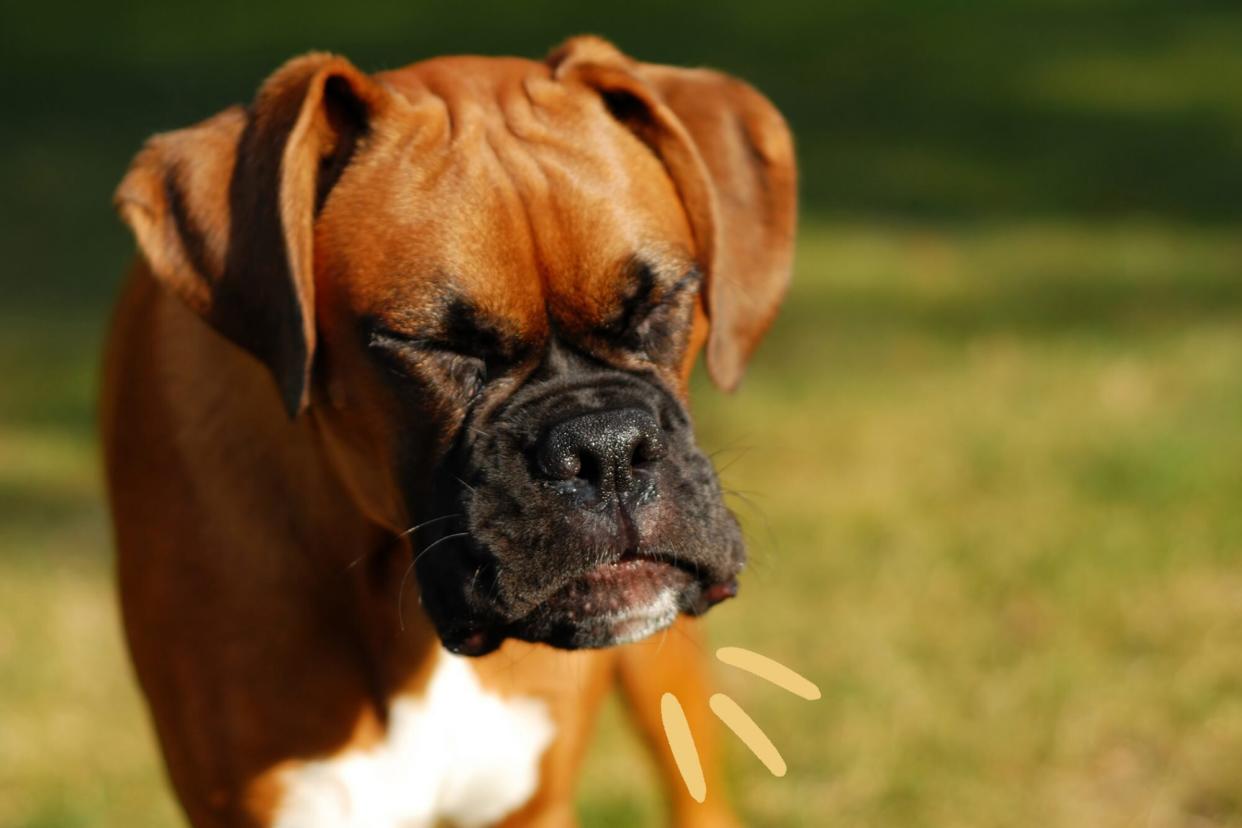What Is Reverse Sneezing in Dogs, Anyway?

sebliminal / Getty
Reverse sneezing, sometimes also referred to as a backward sneeze, often sounds and looks much scarier than it is. The first time you hear your dog experiencing one of these honking episodes, it's not unusual to panic a little. The good news, however, is that reverse sneezing tends to be a harmless condition, no different from regular sneezing. Whether your dog has experienced a reverse sneeze or not, it's good to know what to look out for. Here, we take a look at what exactly these episodes are, how to mitigate discomfort for your dog, and when to be concerned.
What Is Reverse Sneezing in Dogs?
Just as the name suggests, reverse sneezing is the opposite of a regular sneeze. Nikki Graham, DMV from Nottingham Animal Hospital in Hamilton, N.J., explains, "a reverse sneeze is the opposite of a regular sneeze—it occurs when a dog is breathing in." Usually this happens when a dog's soft palate, which is located on the roof of the mouth, becomes irritated. When reverse sneezing, Graham says, "the dog extends [their] neck and their throat spasms, causing a honking, gagging sound." These episodes usually last no longer than ten seconds, says Graham. While this condition is fairly common in all dogs, it most often occurs in smaller dogs.
Causes of Reverse Sneezing in Dogs
According to Graham, any common irritant can cause a reverse sneeze. The most common irritants include pollen, dust, and strong smells such as perfumes or chemicals. Other causes can include drinking cold water fast or periods of overexcitement.
Overall, brachycephalic dogs tend to be more prone to reverse sneezing, and dogs that do experience reverse sneezing are likely to experience multiple episodes throughout their lives.
Is It Harmful?
Usually, reverse sneezing in dogs is not harmful at all! While it can look and sound incredibly scary to a pet parent, especially when they see it for the first time, most of the time dogs are completely fine before and after an episode.
Occasionally, reverse sneezing can be an issue in dogs with underlying medical conditions, such as heart disease. Sometimes, reverse sneezing is confused with a tracheal collapse, which is a much more serious condition and is characterized by a loud, honking sound. In contrast, reverse sneezing tends to sound more like a gagging or quieter honking sound. If you are not sure if your dog is reverse sneezing, Graham recommends taking a video to send or show to your veterinarian, who will be able to confirm the diagnosis or recommend further steps.
Dog Reverse Sneezing Treatment
Most of the time, treating reverse sneezing in your dog is about reducing their discomfort by trying to stop the episode. Graham says that some owners will gently stroke their dog's throat, cover their nose for a few seconds, or lightly blow in their face. All of these things will encourage your dog to swallow, which can stop the reverse sneeze.
Most of the time, medication isn't needed to treat reverse sneezing, but some veterinarians may recommend antihistamines if they consider the problem to be serious, chronic, and allergy-related. If episodes of reverse sneezing become more frequent, says Graham, you should take your dog to the vet, where they can look into more serious concerns such as a foreign body in the nasal passage, nasal mites, or an elongated soft palate that can be surgically treated.
Preventing Reverse Sneezing in Dogs
Graham says that you can help to prevent episodes of reverse sneezing by restricting access to especially dusty areas, such as rooms undergoing construction, or limiting time outdoors during peak allergy seasons. You can also reduce use of strongly perfumed products at home. Your veterinarian may also recommend and prescribe certain medications to reduce the frequency of these episodes if necessary.

